The automotive world presents a fascinating dichotomy between reliability and desirability, nowhere more evident than in the contrast between Japan’s engineering philosophy and Europe’s pursuit of luxury and performance.
While European manufacturers have built their reputations on cutting-edge technology, sophisticated design, and prestige, Japanese automakers have consistently prioritized dependability, efficiency, and long-term durability.
This fundamental difference in approach has created two distinct automotive cultures: one that thrills with innovation and status, and another that satisfies with unwavering consistency.
Japanese manufacturers like Toyota, Honda, and Mazda have built their global success on the principle of continuous improvement, or “kaizen,” resulting in vehicles that may lack the glamour of their European counterparts but compensate with exceptional longevity and minimal maintenance requirements.
These cars often fly under the radar, lacking the brand cachet of German luxury or Italian exotica, yet they continue running long after their more prestigious competitors have been relegated to expensive paperweights.
Conversely, European automotive icons from Germany, Italy, and Britain have interested enthusiasts for decades with their sophisticated engineering, luxurious interiors, and performance capabilities.
However, this pursuit of excellence often comes at the cost of reliability, with complex systems, premium materials, and cutting-edge technology creating multiple points of failure that can result in substantial repair bills and frequent service visits.
5 Obscure Japanese Cars That Don’t Fail
These overlooked vehicles deliver extraordinary longevity through meticulous engineering, conservative design philosophy, and rigorous quality control that enables decades of trouble-free operation while maintaining excellent fuel economy and dependable performance characteristics.
Their robust construction incorporates proven powertrains, reliable electrical systems, and durable materials that resist wear and environmental damage far better than celebrated European alternatives that prioritize style over mechanical integrity.
The combination of reasonable purchase prices, excellent parts availability, and minimal maintenance requirements creates ownership experiences that reward patience with exceptional value retention.
From respected manufacturers with proven reliability expertise to understated models with extensive real-world validation, these vehicles demonstrate that automotive excellence often comes without recognition, providing dependable transportation that outlasts more prestigious competitors through superior fundamental engineering and manufacturing quality that prioritizes longevity over trendy features or luxury positioning in competitive automotive markets.
1. Toyota Land Cruiser 80 Series (1990-1997)
The Toyota Land Cruiser 80 Series stands as perhaps the most bulletproof SUV ever manufactured, earning legendary status among off-road enthusiasts and overlanding communities worldwide.
While not exactly obscure in certain circles, it remains relatively unknown to mainstream car buyers who gravitate toward more modern SUVs. This generation of Land Cruiser represents Toyota’s engineering philosophy at its finest: build it once, build it right, and make it last forever.
The heart of the 80 Series lies in its robust powertrain options, particularly the legendary 1FZ-FE 4.5-liter inline-six engine. This naturally aspirated powerplant produces a modest 212 horsepower but delivers it through a torque curve as flat as the Australian Outback where many of these vehicles have spent their working lives.
The engine’s cast-iron construction, conservative tuning, and generous cooling capacity ensure it can operate reliably in extreme conditions for hundreds of thousands of miles.
Many examples have exceeded 300,000 miles without major engine work, with some documented cases reaching half a million miles with proper maintenance.
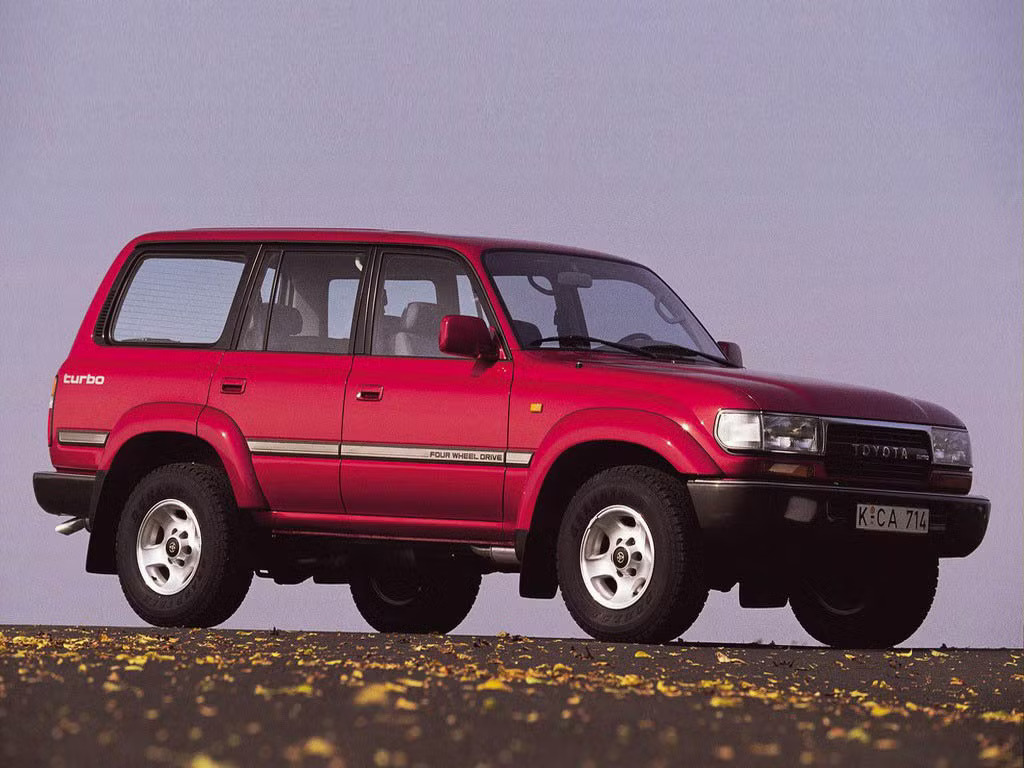
The transmission and drivetrain components match the engine’s durability standards. The four-speed automatic transmission, while not particularly sophisticated by modern standards, features robust internals and simple hydraulic controls that rarely fail.
The full-time four-wheel-drive system with a center differential lock provides exceptional traction without the complexity of modern electronic systems that can malfunction in remote locations. The solid axles front and rear, while sacrificing some on-road comfort, provide unmatched durability and repairability in harsh conditions.
What truly sets the 80 Series apart is its remarkable resistance to the common failure points that plague other vehicles. The electrical system, often a source of gremlins in other cars, remains refreshingly simple and reliable.
The body construction, featuring extensive use of galvanized steel, resists corrosion far better than many contemporaries. Interior components, while not luxurious, are built to withstand decades of use without failure.
This combination of robust engineering and conservative design has created a vehicle that appreciates in value rather than depreciating, with clean examples commanding premium prices in today’s market.
2. Honda Prelude (1988-2001)
The Honda Prelude represents one of automotive history’s most underappreciated sports coupes, combining Honda’s legendary reliability with genuine performance capabilities and innovative engineering.
Spanning four generations, the Prelude consistently delivered engaging driving dynamics while maintaining the dependability that Honda owners have come to expect.
Unlike many sports cars that sacrifice reliability for performance, the Prelude managed to excel in both areas, making it a hidden gem among enthusiasts who prioritize both fun and functionality.
The Prelude’s heart lies in Honda’s naturally aspirated four-cylinder engines, particularly the H22A and F22A powerplants found in later generations.
These engines showcase Honda’s mastery of high-revving, naturally aspirated performance, with the H22A producing up to 200 horsepower from just 2.2 liters of displacement.
The secret lies in Honda’s variable valve timing and lift electronic control (VTEC) system, which allows the engine to behave like a docile commuter car at low RPMs while transforming into a screaming performance machine above 5,500 RPM. Unlike turbocharged engines with their added complexity and potential failure points, these naturally aspirated units are remarkably simple and robust.
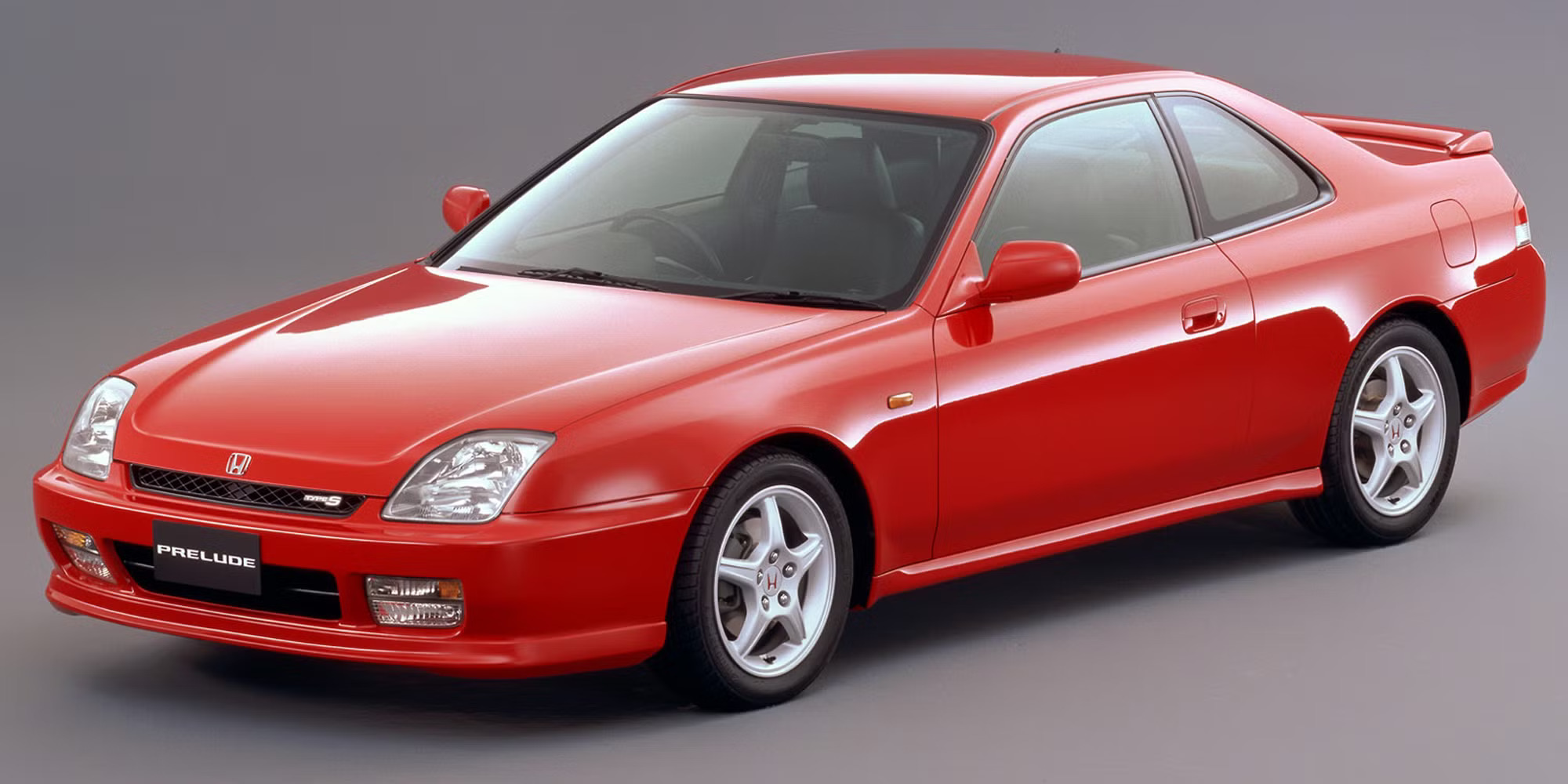
The transmission options further enhance the Prelude’s reliability credentials. The five-speed manual transmission, borrowed from Honda’s racing programs, features precise synchromesh and robust internals that can handle enthusiastic driving for decades without major issues.
Even the optional four-wheel steering system, a technological marvel that could have been a maintenance nightmare, proves surprisingly durable thanks to Honda’s conservative engineering approach.
The system uses simple hydraulic controls rather than complex electronic interfaces, reducing potential failure points while still providing the handling benefits of rear-wheel steering.
What makes the Prelude truly special is its combination of sports car performance with Honda’s legendary build quality. The body construction resists corrosion exceptionally well, particularly compared to European sports cars of the same era.
The interior components, while not luxurious, are built to withstand years of spirited driving without developing the rattles and failures common in other performance cars. Maintenance requirements remain reasonable, with most components easily accessible and affordable to replace.
This combination of performance, reliability, and reasonable running costs has created a cult following among enthusiasts who appreciate cars that deliver thrills without the drama of constant repairs.
3. Mazda RX-7 FC (1986-1991)
The Mazda RX-7 FC represents one of the most unique and reliable sports cars ever produced, powered by Mazda’s revolutionary rotary engine technology.
While the rotary engine often receives criticism for poor fuel economy and emissions, the 13B-T turbocharged rotary in the FC generation proves remarkably durable when properly maintained and understood.
This generation of RX-7 strikes an ideal balance between the simplicity of the earlier SA/FB models and the complexity of the later FD generation, resulting in a sports car that delivers exceptional performance with surprising reliability.
The 13B-T rotary engine differs fundamentally from conventional piston engines, using triangular rotors spinning within epitrochoidal chambers to create power.
This design eliminates the thousands of reciprocating parts found in piston engines, reducing vibration and mechanical stress while enabling incredibly smooth power delivery.
The turbocharged version produces up to 200 horsepower in a package weighing just 250 pounds, providing an exceptional power-to-weight ratio that conventional engines struggle to match. When maintained properly with regular oil changes and occasional carbon cleaning, these engines routinely exceed 150,000 miles without major rebuilds.

The FC’s reliability extends beyond its unique powerplant to encompass the entire vehicle architecture. The chassis construction utilizes high-strength steel in critical areas while maintaining relatively light weight, providing excellent rigidity without excessive complexity.
The suspension system, featuring independent front and rear setups, uses simple and robust components that are easily serviced and rarely fail. The turbocharging system, while adding complexity, uses proven Hitachi components that have demonstrated exceptional durability when operated within design parameters.
What sets the FC apart from many sports cars is its remarkable resistance to the electrical and cooling system failures that plague other performance vehicles.
The engine cooling system, critical for rotary engine longevity, features oversized radiators and robust water pumps that rarely fail when maintained properly.
The electrical system remains refreshingly simple compared to modern vehicles, with most components easily diagnosed and repaired. The interior and body construction, while showing typical 1980s Japanese build quality rather than luxury, proves remarkably durable over time.
This combination of unique technology, robust construction, and reasonable maintenance requirements has created a sports car that continues to deliver thrills decades after production ended, often outlasting more conventional sports cars that appeared more reliable on paper.
4. Acura Integra Type R (1997-2001)
The Acura Integra Type R stands as the pinnacle of Honda’s naturally aspirated performance engineering, representing a philosophy that prioritizes reliability and longevity alongside exceptional performance.
This hardcore version of the Integra coupe demonstrates that high-performance cars don’t need to sacrifice dependability, combining race-bred components with Honda’s legendary build quality to create a vehicle that excels on both track and street while maintaining exceptional reliability over decades of use.
At the heart of the Type R lies the legendary B18C5 engine, a 1.8-liter naturally aspirated four-cylinder that produces 195 horsepower through Honda’s most advanced VTEC system.
This engine represents the culmination of Honda’s naturally aspirated technology, featuring forged internals, high-compression pistons, and aggressive camshaft profiles that enable it to rev safely to 8,400 RPM.
Unlike turbocharged engines with their complex plumbing and potential failure points, the B18C5’s naturally aspirated design ensures remarkable simplicity and durability.
The engine’s conservative cooling system design and robust oiling system enable it to withstand track use and spirited driving for hundreds of thousands of miles with proper maintenance.

The Type R’s transmission and drivetrain components match the engine’s exceptional standards. The close-ratio five-speed manual transmission features shorter gearing optimized for performance, with synchromesh robust enough to handle aggressive shifting for decades.
The limited-slip differential, essential for putting the engine’s power to the ground effectively, uses a simple mechanical design that requires minimal maintenance while providing consistent performance throughout its life. The clutch and flywheel assembly, while designed for performance, proves remarkably durable even under track conditions.
Beyond the powertrain, the Type R showcases Honda’s ability to create a focused performance car without sacrificing reliability. The stripped interior, featuring Recaro seats and minimal sound deadening, reduces weight while eliminating potential sources of rattles and failures common in more luxurious vehicles.
The suspension system, featuring stiffer springs and dampers calibrated for performance, uses simple and robust components that rarely require replacement outside of normal wear items.
The body construction, sharing basic architecture with regular Integras, benefits from Honda’s excellent corrosion resistance and build quality. This combination of high performance and exceptional reliability has made the Type R a holy grail among Honda enthusiasts, with clean examples commanding premium prices that reflect their legendary status as reliable performance icons.
Also Read: 5 Hidden Gem Convertibles vs 5 Popular Convertibles With Leaky Tops
5. Lexus LS 400 (1989-1994)
The original Lexus LS 400 represents one of automotive history’s greatest achievements in reliability engineering, combining luxury car refinement with Japanese dependability to create a vehicle that redefined expectations for premium automobiles.
When Toyota launched Lexus with the LS 400, they invested over one billion dollars in development with a singular goal: create a luxury sedan that would match or exceed German competitors in every measurable way while maintaining Toyota’s legendary reliability.
The result was a vehicle so well-engineered that many examples continue operating flawlessly after three decades and hundreds of thousands of miles.
The LS 400’s legendary reliability begins with its magnificent 1UZ-FE V8 engine, a masterpiece of engineering that produces 250 horsepower while maintaining exceptional smoothness and durability.
This all-aluminum, quad-cam, 32-valve engine features conservative tuning and generous cooling capacity that enables it to operate reliably for extraordinary mileage.
The engine’s sophisticated design includes features like individual coil-on-plug ignition and variable intake geometry, technologies that were revolutionary in 1989 but implemented with such conservative engineering that they rarely fail.
Many LS 400s have exceeded 400,000 miles without major engine work, with some documented examples approaching 600,000 miles with only routine maintenance.
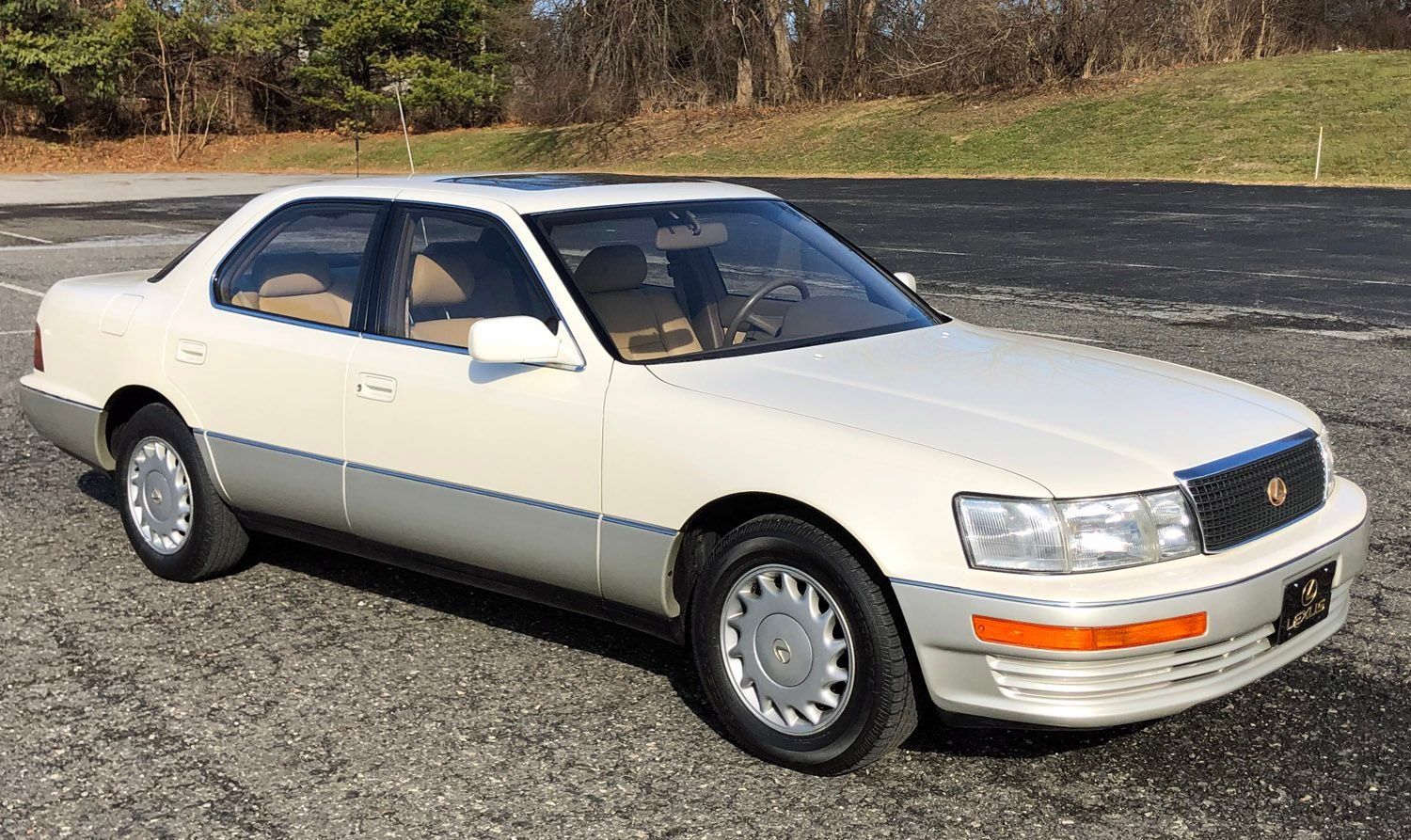
The transmission and drivetrain components demonstrate equal attention to durability. The four-speed automatic transmission, developed specifically for the LS 400, features robust internals and sophisticated hydraulic controls that provide smooth shifting throughout the vehicle’s life.
The transmission’s conservative gear ratios and generous cooling system ensure longevity even under demanding conditions. The rear-wheel-drive layout, while more complex than front-wheel-drive systems, provides better weight distribution and reduces stress on drivetrain components, contributing to the vehicle’s exceptional longevity.
What truly sets the LS 400 apart is its comprehensive approach to reliability across every vehicle system. The air conditioning system, often a source of expensive repairs in luxury cars, features robust components and redundant systems that continue operating for decades.
The complex electronic systems, including early versions of stability control and climate control, use conservative programming and high-quality components that resist the failures common in other luxury vehicles.
The interior materials, including genuine wood trim and leather surfaces, are selected and treated for durability rather than just initial impression. Even the paint system receives special attention, with multiple clear coat layers providing exceptional resistance to environmental damage.
This holistic approach to reliability engineering created a luxury car that delivers premium experiences without the premium repair bills, establishing Lexus as a legitimate alternative to established European luxury brands.
5 European Icons Prone to Breakdowns
These celebrated vehicles disappoint owners with frequent failures, expensive repairs, and reliability issues that contradict their prestigious reputation and premium pricing through constant maintenance costs that quickly exceed any initial appeal from sophisticated engineering or luxury appointments.
Their complex systems incorporate problematic components, inadequate quality control, and design compromises that generate endless repair headaches despite European positioning that suggests superior engineering excellence over mainstream alternatives from other regions.
The combination of astronomical purchase prices, specialized service requirements, and disappointing durability creates ownership disasters as buyers discover that prestigious badges and sophisticated technology cannot compensate for fundamental reliability problems that prioritize complexity over dependability.
From celebrated manufacturers with poor quality standards to iconic models with known catastrophic issues, these vehicles prove that European prestige and engineering reputation mean nothing when basic mechanical reliability fails, transforming dream cars into expensive repair burdens requiring constant professional attention and specialized parts.
1. Range Rover (1970-1996)
The original Range Rover stands as one of automotive history’s most influential designs, creating the luxury SUV segment while establishing a template that manufacturers continue to follow today.
However, beneath its groundbreaking design and exceptional off-road capabilities lies a vehicle plagued by reliability issues that have become legendary among owners and mechanics alike.
The Range Rover’s combination of advanced technology, complex systems, and occasionally questionable British engineering practices created a vehicle that could traverse the Sahara Desert one day and refuse to start in a suburban driveway the next.
The Range Rover’s reliability challenges begin with its sophisticated engine options, particularly the legendary Rover V8. While this aluminum engine produces excellent power and torque characteristics, it suffers from numerous design flaws that manifest as expensive repair bills.
The engine’s susceptibility to overheating stems from marginal cooling system capacity combined with prone-to-failure water pumps and thermostats.
The cylinder head gaskets, using outdated sealing technology, frequently fail due to thermal cycling, resulting in coolant contamination and expensive rebuilds.
The engine’s electrical systems, including the ignition and fuel injection components, use early electronic controls that were revolutionary in concept but troublesome in execution.
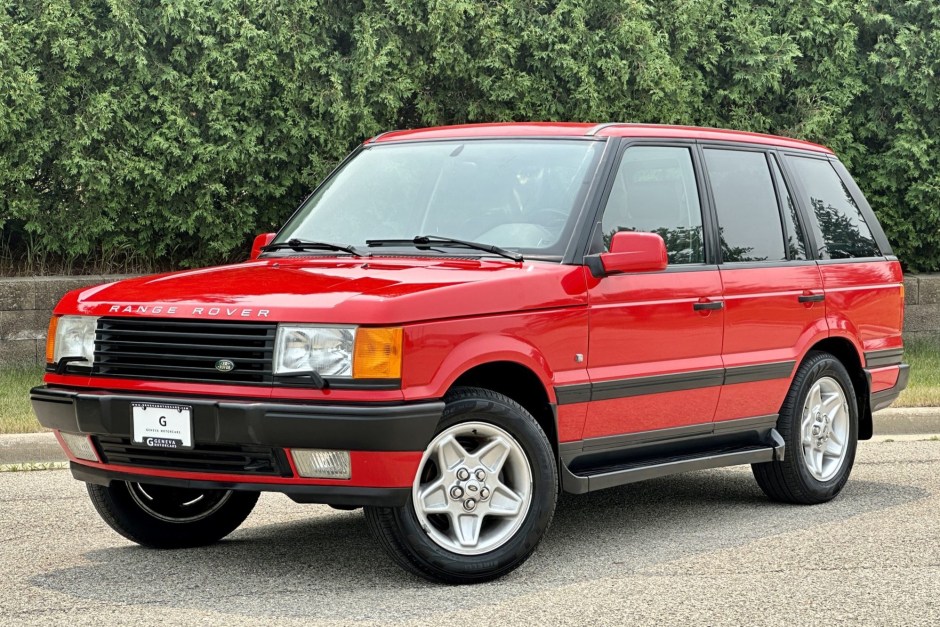
The transmission systems present equally challenging reliability concerns. The early manual transmissions, while robust in design, suffer from synchromesh wear and gear selector problems that make smooth shifting difficult as mileage accumulates.
The automatic transmission options, sourced from various suppliers throughout production, feature complex hydraulic systems that are sensitive to fluid quality and operating temperature.
These transmissions frequently develop harsh shifting characteristics and eventually require complete rebuilds, often at costs approaching the vehicle’s remaining value.
Beyond the powertrain, the Range Rover’s electrical systems have achieved notorious status among automotive electrical specialists. The vehicle’s comprehensive electrical architecture, featuring electric windows, central locking, and climate control systems, uses early electronic modules that are prone to failure due to moisture infiltration and component degradation.
The wiring harnesses, routed through areas exposed to heat and moisture, frequently develop shorts and open circuits that create intermittent failures difficult to diagnose and repair.
The air conditioning system, while providing excellent comfort when operational, features complex vacuum-operated controls and refrigerant systems that require constant attention and expensive repairs.
Despite these reliability challenges, the Range Rover’s exceptional capabilities and iconic status ensure continued devotion from owners willing to accept the substantial maintenance commitments required to keep these vehicles operational.
2. BMW E65 7 Series (2001-2008)
The BMW E65 7 Series represents the German manufacturer’s most ambitious attempt to incorporate cutting-edge technology into a luxury sedan, resulting in a vehicle that pushed the boundaries of automotive innovation while simultaneously creating one of the most reliability-challenged vehicles in BMW’s history.
This generation of 7 Series introduced numerous groundbreaking technologies including the controversial iDrive system, electronic valve management, and complex air suspension systems, many of which proved troublesome in real-world use and expensive to maintain as the vehicles aged.
The E65’s reliability challenges stem primarily from its overwhelming complexity and BMW’s aggressive adoption of unproven technologies. The iDrive system, revolutionary in concept but problematic in execution, controls numerous vehicle functions through a single interface that frequently malfunctions due to software bugs and hardware failures.
The electronic valve management system, designed to improve performance and efficiency, features complex actuators and sensors that fail regularly and require expensive recalibration.
The variable valve timing systems, while providing excellent performance, use sophisticated electronic controls and hydraulic actuators that are sensitive to oil quality and maintenance intervals.

The vehicle’s air suspension system exemplifies the E65’s approach of prioritizing technology over reliability. The system provides exceptional ride quality and handling capabilities through electronically controlled air springs and adaptive dampers, but these components prove expensive to maintain and prone to failure.
The air springs frequently develop leaks that result in uneven ride height and harsh ride quality, while the electronic control modules responsible for system operation often fail due to moisture infiltration and electrical issues.
Replacement costs for suspension components often exceed several thousand dollars, making maintenance economically challenging for owners of older vehicles.
The E65’s electrical systems present perhaps the most significant reliability challenges, featuring over 60 separate electronic control modules that communicate through multiple network protocols.
These modules control everything from engine management to comfort features, creating numerous potential failure points that can render the vehicle inoperable.
The complex wiring harnesses, containing thousands of individual circuits, are prone to developing shorts and open circuits that create intermittent failures difficult to diagnose.
The battery and charging systems, required to support the vehicle’s massive electrical demands, frequently fail due to the constant power requirements of standby systems.
Even routine maintenance becomes complicated due to the need for specialized diagnostic equipment and software updates, making independent repair increasingly difficult and expensive.
This combination of technological ambition and execution challenges created a luxury sedan that delivers exceptional capabilities when functioning properly but requires substantial financial commitment and specialized expertise to maintain reliability.
3. Jaguar XJ (X308/X350 generations, 1997-2009)
The Jaguar XJ from the X308 and X350 generations represents British luxury automotive engineering at both its finest and most frustrating, combining exceptional refinement and performance with reliability challenges that have become legendary among luxury car owners.
These generations of XJ showcase Jaguar’s traditional strengths in creating vehicles with distinctive character and exceptional driving dynamics, while simultaneously demonstrating the reliability issues that have plagued the brand throughout its history.
The combination of sophisticated engineering, complex systems, and occasionally questionable component choices created vehicles that could provide transcendent driving experiences followed immediately by expensive repair bills.
The XJ’s reliability challenges begin with its sophisticated powertrains, particularly the supercharged V8 engines that provide exceptional performance but require meticulous maintenance to remain reliable.
The supercharging systems, while delivering impressive power increases, introduce additional complexity through intercoolers, bypass valves, and electronic controls that are prone to failure as vehicles age.
The engine management systems, featuring early drive-by-wire throttle controls and complex emission management, use electronic components that frequently malfunction due to heat cycling and electrical interference.
The automatic transmissions, sourced from various suppliers throughout production, feature complex electronic controls and hydraulic systems that are sensitive to fluid quality and require expensive maintenance procedures.
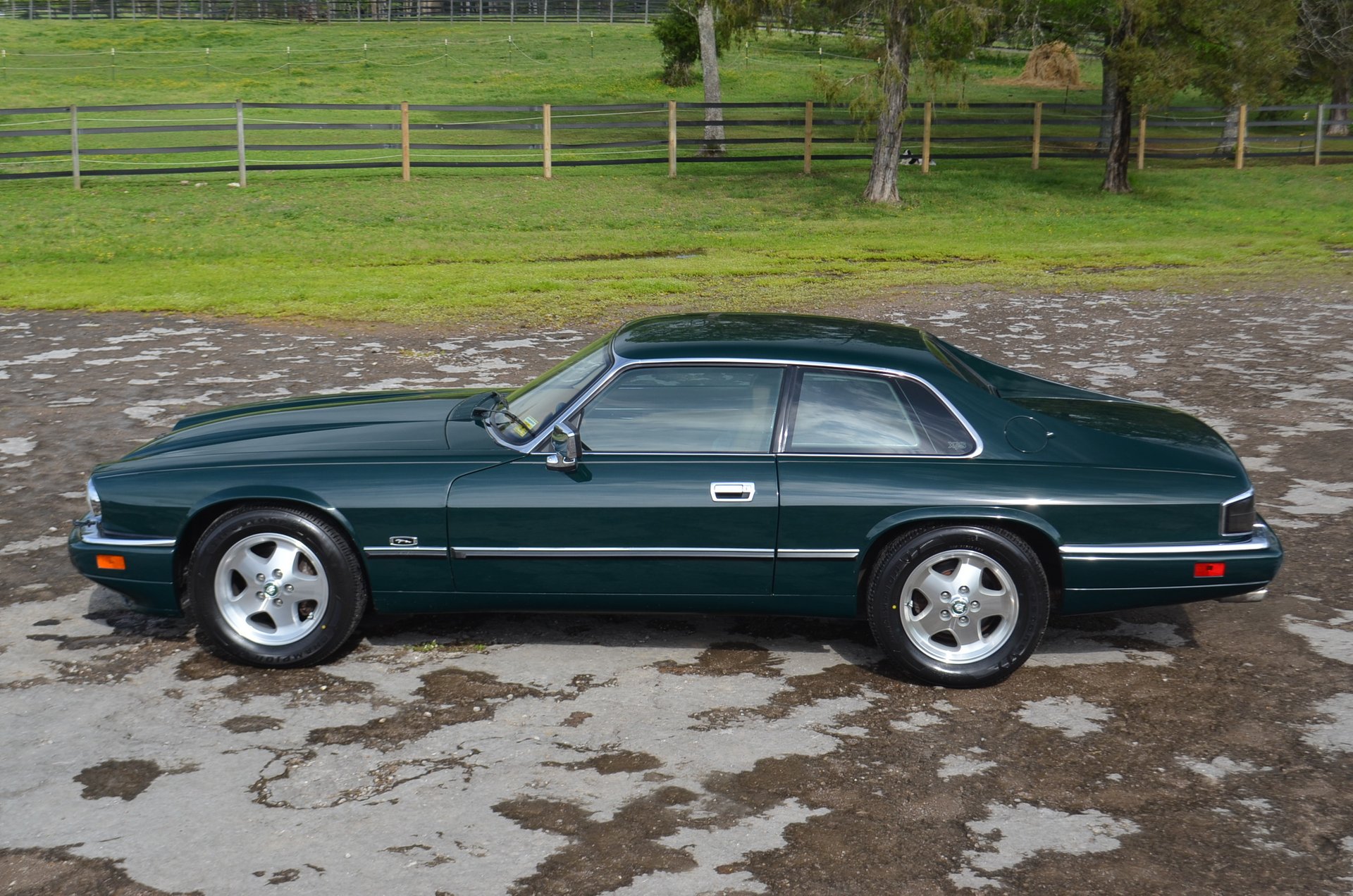
The XJ’s electrical systems have achieved notorious status among automotive technicians, featuring comprehensive electronic architecture that controls virtually every vehicle function through interconnected modules.
The early adoption of multiplex wiring systems, while reducing wire count and complexity in theory, creates diagnostic challenges when faults develop in the communication networks.
The vehicle’s numerous comfort and convenience features, including heated and cooled seats, navigation systems, and climate control, rely on electronic modules that frequently fail due to component degradation and software issues.
The instrument cluster and dashboard electronics, featuring sophisticated displays and warning systems, often develop partial failures that affect multiple functions simultaneously.
The suspension and chassis systems present additional reliability concerns, particularly in vehicles equipped with adaptive damping and air suspension options.
The electronically controlled dampers, while providing exceptional ride quality and handling, feature complex valving systems and electronic controls that require expensive replacement when they inevitably fail.
The air suspension systems, available on later models, use sophisticated height sensors and electronic controls that are sensitive to contamination and electrical issues.
Even the traditional steel spring suspension systems suffer from reliability issues due to complex electronic stability control systems and steering angle sensors that frequently require recalibration.
The body electrical systems, including window regulators, door locks, and lighting circuits, often develop intermittent failures that are difficult to diagnose and expensive to repair.
Despite these reliability challenges, the XJ’s exceptional character and driving dynamics continue to attract enthusiasts willing to accept the substantial maintenance commitments required to keep these sophisticated vehicles operational.
4. Mercedes-Benz S-Class W220 (1998-2005)
The Mercedes-Benz S-Class W220 generation represents the German luxury manufacturer’s ambitious attempt to incorporate revolutionary technology into their flagship sedan, resulting in a vehicle that advanced automotive technology significantly while simultaneously creating one of the most reliability-challenged vehicles in Mercedes-Benz history.
This generation introduced groundbreaking innovations including AIRMATIC air suspension, advanced electronic systems, and sophisticated safety technologies that were years ahead of their time but proved troublesome in long-term ownership due to their complexity and early-adoption issues.
The W220’s reliability challenges stem from Mercedes-Benz’s aggressive implementation of unproven technologies during a period when the company was prioritizing cost reduction and rapid development cycles.
The AIRMATIC air suspension system, while providing exceptional ride quality and automatic leveling capabilities, features complex air springs, electronic controls, and pneumatic systems that are prone to expensive failures.
The air springs frequently develop leaks that result in uneven vehicle height and harsh ride quality, while the electronic control modules often fail due to moisture infiltration and electrical issues.
The system’s complexity requires specialized diagnostic equipment and software, making repairs expensive and limiting service options to dealership networks.
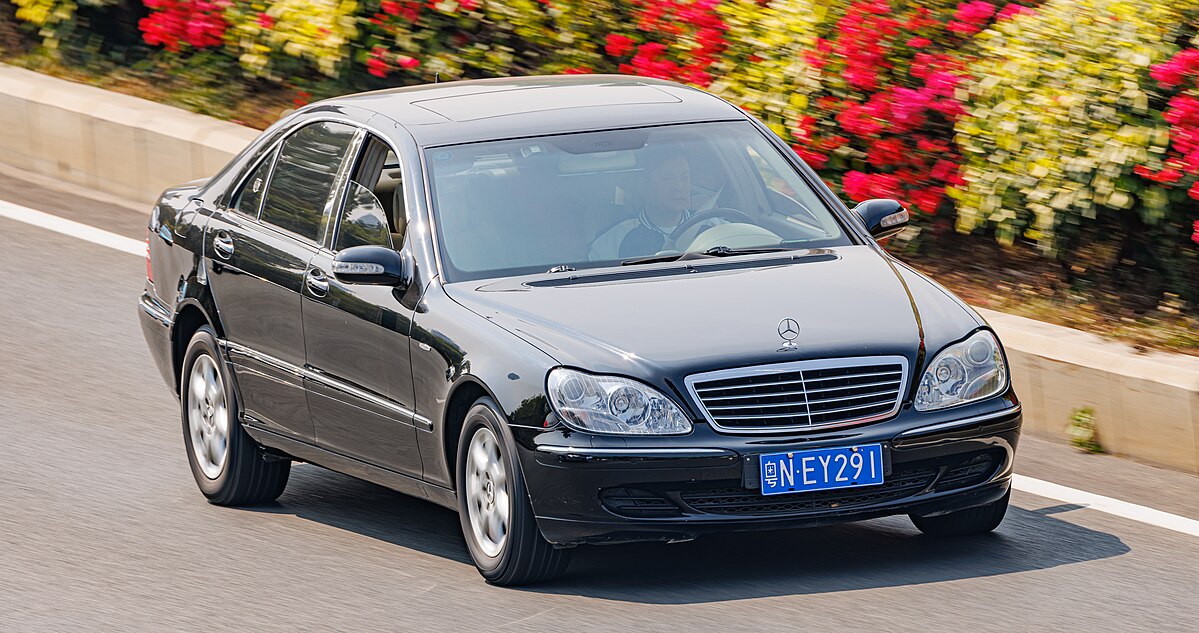
The vehicle’s engine management systems showcase similar complexity-related reliability issues. The electronic throttle control systems, among the first to eliminate mechanical throttle linkages entirely, feature sophisticated servo motors and position sensors that frequently malfunction and require expensive replacement.
The variable valve timing systems, while providing excellent performance and efficiency benefits, use complex hydraulic actuators and electronic controls that are sensitive to oil quality and maintenance intervals.
The advanced transmission systems, featuring electronic shift controls and adaptive programming, rely on complex electronic modules that often develop software corruption and hardware failures requiring complete replacement.
The W220’s comprehensive electronic architecture presents perhaps the most significant reliability challenges, featuring over 50 separate control modules that communicate through multiple network protocols.
These modules control everything from engine management to seat memory functions, creating numerous potential failure points that can affect multiple vehicle systems simultaneously.
The instrument cluster electronics frequently develop pixel failures and warning light malfunctions that affect driver information systems. The complex climate control systems, featuring automatic temperature regulation and air quality monitoring, use sophisticated sensors and actuators that often fail due to contamination and electronic issues.
The advanced safety systems, including early versions of electronic stability control and brake assist, rely on numerous sensors and electronic modules that require precise calibration and frequently malfunction as vehicles age.
This combination of technological innovation and execution challenges created a luxury sedan that delivered cutting-edge capabilities when functioning properly but required substantial financial commitment and specialized expertise to maintain reliability, ultimately damaging Mercedes-Benz’s reputation for dependability and leading to significant changes in the company’s development philosophy.
5. Audi A8 D2 (1994-2002)
The Audi A8 D2 represents Audi’s bold entry into the luxury sedan segment, introducing revolutionary aluminum space frame construction and advanced technology that positioned the brand as a legitimate competitor to established luxury manufacturers.
However, this ambitious vehicle also demonstrates the reliability challenges that can result from pioneering new technologies and complex engineering solutions.
The A8 D2’s combination of innovative construction methods, sophisticated electronic systems, and advanced powertrains created a vehicle that advanced automotive technology significantly while simultaneously presenting owners with substantial reliability and maintenance challenges.
The A8 D2’s most significant innovation, its aluminum space frame construction, while providing exceptional rigidity and weight savings, introduces unique maintenance challenges that traditional steel-bodied vehicles don’t experience.
The aluminum construction requires specialized repair techniques and equipment that limit service options to facilities equipped for aluminum welding and fabrication.
The dissimilar metal connections between aluminum body components and steel mechanical parts create potential corrosion issues that can affect structural integrity over time.
The complex joining methods used in the space frame construction, including rivets, welds, and adhesives, can develop failures that are difficult to detect and expensive to repair.

The vehicle’s sophisticated powertrain options present additional reliability challenges, particularly the advanced V8 engines with their complex timing chain systems and electronic management.
The timing chain tensioners, critical for maintaining proper valve timing, frequently fail due to inadequate oil pressure and material degradation, resulting in expensive engine rebuilds when chains skip timing.
The electronic engine management systems, featuring early implementations of direct injection and variable valve timing, use complex sensors and actuators that are prone to failure and expensive to replace.
The advanced automatic transmissions, featuring electronic shift controls and adaptive programming, rely on sophisticated hydraulic systems and electronic modules that frequently develop shifting problems and require expensive repairs.
The A8’s comprehensive electronic systems showcase Audi’s early adoption of advanced technology while demonstrating the reliability challenges associated with complex electronic architecture.
The vehicle features numerous electronic control modules that communicate through early implementations of network protocols, creating potential failure points throughout the electrical system.
The advanced climate control systems, featuring automatic temperature regulation and air quality monitoring, use sophisticated sensors that frequently malfunction due to contamination and age-related degradation.
The navigation and entertainment systems, revolutionary for their time, feature complex electronic components that often fail due to heat cycling and component obsolescence.
The instrument cluster electronics, including early implementations of digital displays and warning systems, frequently develop partial failures that affect driver information and vehicle monitoring capabilities.
Even routine maintenance becomes complicated due to the need for specialized diagnostic equipment and software, making independent repair challenging and expensive.
This combination of technological innovation and complexity-related reliability issues created a luxury sedan that delivered exceptional capabilities and prestige when functioning properly but required substantial ongoing investment in specialized maintenance and repairs, establishing patterns that would influence Audi’s approach to luxury vehicle development for years to come.
Also Read: 5 Budget-Friendly Trucks That Last vs 5 Expensive Trucks That Don’t

